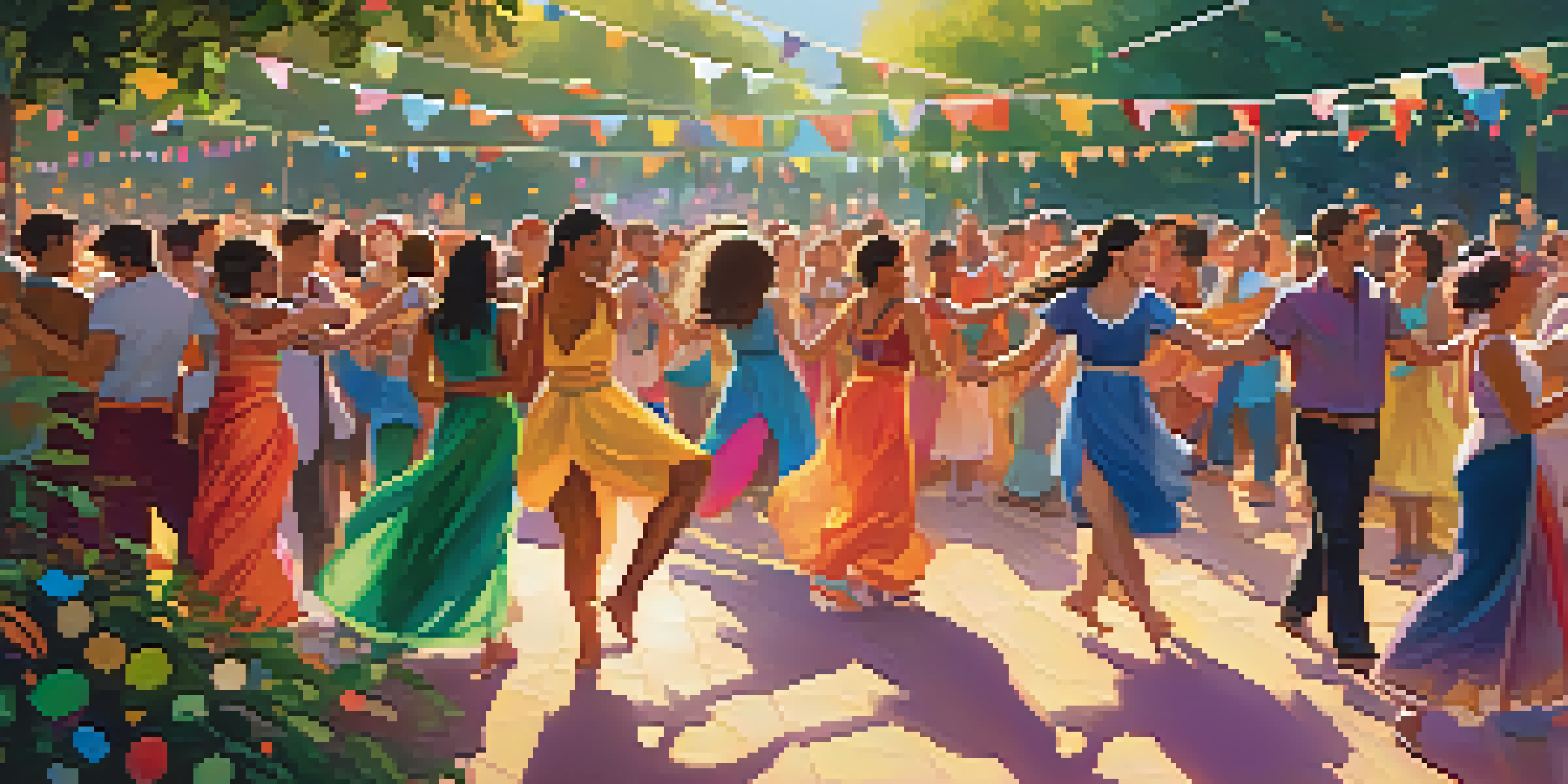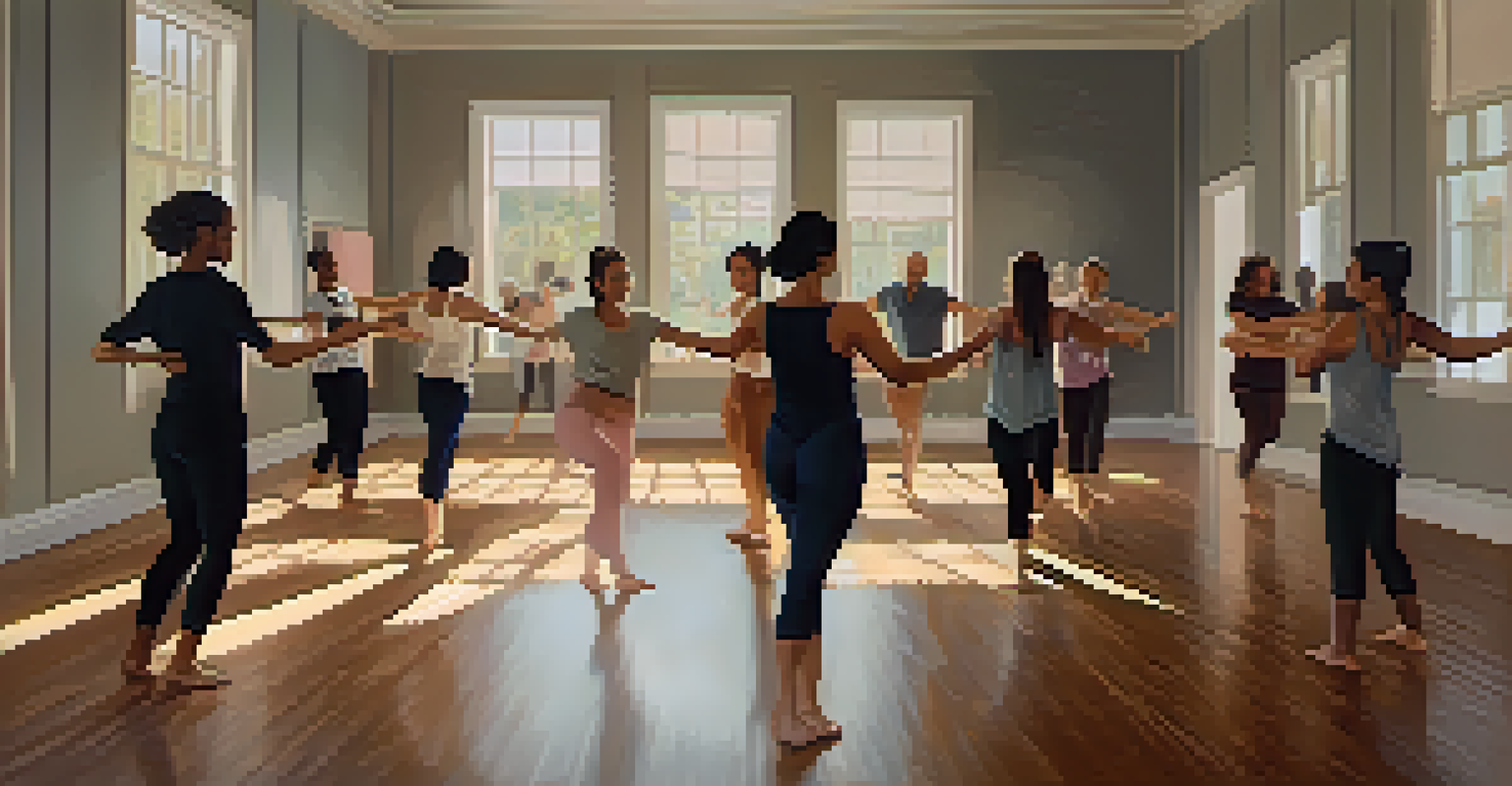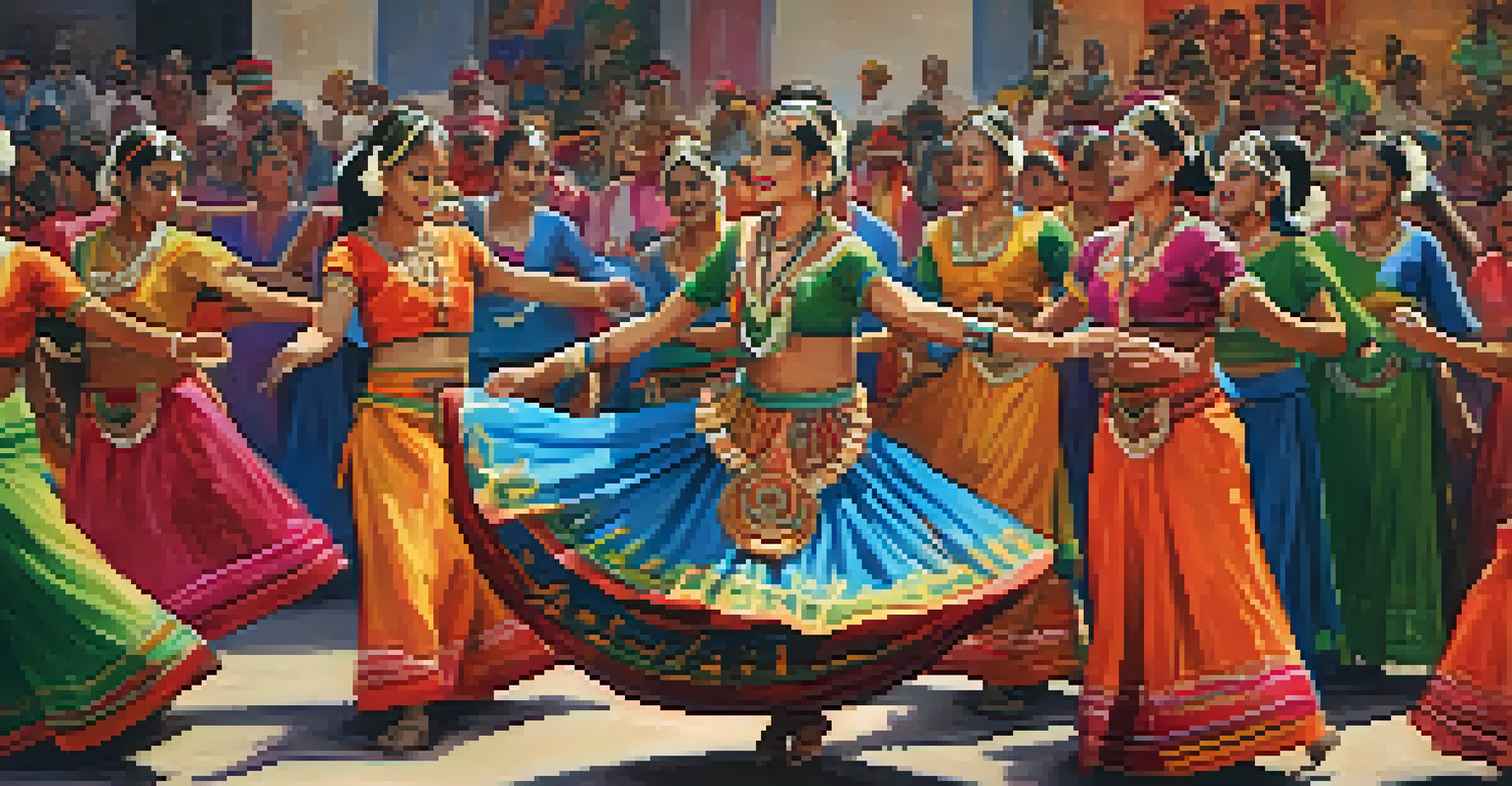Dance and Its Role in Building Social Connections and Support

Dance as a Universal Language of Connection
Dance transcends barriers, allowing people from diverse backgrounds to communicate and connect without words. Whether it's a joyful celebration or a solemn occasion, movement can express emotions that words sometimes fail to capture. For instance, a group of strangers might come together on a dance floor, sharing smiles and laughter, forming bonds that would have seemed unlikely moments earlier.
Dance is the hidden language of the soul.
This universal language makes dance a powerful tool for social interaction. People can unite over shared rhythms, creating a sense of belonging and understanding. Think about a wedding or a cultural festival—when the music starts, it invites everyone to participate, fostering connections that might last well beyond the event.
Moreover, dance encourages creativity and collaboration, which deepens these social ties. When individuals come together to learn a dance, they not only improve their skills but also build relationships based on teamwork and mutual support.
Creating Community Through Group Dance Activities
Group dance activities, such as salsa nights or community dance classes, serve as fantastic platforms for socializing. These events are designed to bring people together, allowing them to meet new friends while enjoying the art of movement. Often, participants find a welcoming environment where they can feel comfortable and confident, regardless of their skill level.

For example, consider a local dance studio hosting weekly classes. Participants often return not just for the dancing but for the camaraderie they develop with fellow dancers. They share stories, laugh, and offer support, turning a simple class into a vibrant community hub.
Dance Connects Diverse Communities
Dance transcends barriers, fostering connections among individuals from various backgrounds through shared movement and rhythm.
Additionally, these gatherings can break down social barriers, inviting individuals from various walks of life to share the dance floor. This mix can lead to enriching conversations and friendships that extend beyond the dance studio.
Dance as a Tool for Emotional Expression and Healing
Dance provides a unique outlet for emotional expression, allowing individuals to communicate feelings that they might struggle to articulate. Whether it's a solo performance or a group routine, the act of dancing can be cathartic, helping to release pent-up emotions. Many people find solace in dance during challenging times, using it as a form of therapy.
Dancing is like dreaming with your feet.
For instance, dance therapy has been shown to help individuals cope with trauma and anxiety. Through movement, participants can express what they might not be able to say, creating a healing environment. This form of therapy not only promotes emotional well-being but also fosters connections among participants who share similar experiences.
In this way, dance becomes not just a physical activity but also a means of building a support system. Those who dance together often find comfort in each other, creating a network of understanding and compassion.
Cultural Dance: A Celebration of Heritage and Identity
Cultural dances serve as a beautiful representation of heritage and identity, connecting individuals to their roots. These dances often tell stories of a community's history, struggles, and triumphs, allowing participants to celebrate their culture. For many, engaging in traditional dance is a way to honor their ancestors and keep their cultural legacy alive.
Take, for example, the vibrant performances during cultural festivals. Participants don traditional attire and share dances that have been passed down through generations. This not only strengthens their identity but also invites others to appreciate and learn about different cultures.
Dance as Emotional Expression
Dance serves as a powerful outlet for emotional expression, allowing individuals to communicate feelings and find healing through movement.
Moreover, cultural dance fosters inclusivity, as it encourages others to join in and learn. When people come together to celebrate diverse traditions, they create a rich tapestry of shared experiences and mutual respect.
Dance in Education: Building Social Skills in Youth
Incorporating dance into educational settings can significantly enhance social skills among youth. Dance classes often require teamwork, communication, and respect for one another, all crucial components of social interactions. Through group projects and performances, students learn to collaborate and support each other, skills that are invaluable in their future endeavors.
For instance, school dance programs often involve students from different grades working together towards a common goal, such as a recital. This collaboration fosters a sense of community and encourages friendships to blossom across age groups, breaking down social barriers.
Additionally, dance can help boost self-esteem and confidence, particularly for young people navigating the complexities of social dynamics. As they learn to express themselves through movement, they also become more comfortable in their own skin, which translates into their interactions outside the dance classroom.
The Role of Social Media in Dance Connections
In today's digital age, social media plays a significant role in uniting dancers and dance enthusiasts worldwide. Platforms like Instagram, TikTok, and YouTube have become virtual dance studios, allowing individuals to share their passion for dance and connect with like-minded people. These platforms break geographical barriers, enabling dancers from different countries to collaborate and inspire each other.
For example, viral dance challenges have brought together millions of users, encouraging them to learn new choreography and share their interpretations. This sense of community fosters creativity and supports budding dancers as they gain confidence in their abilities.
Cultural Dance Celebrates Heritage
Cultural dances honor heritage and identity, enabling participants to connect with their roots while fostering inclusivity and mutual respect.
Moreover, social media allows for the establishment of online dance groups or clubs, where members can share tips, experiences, and encouragement. These virtual connections often lead to real-life friendships, further emphasizing the power of dance in creating social bonds.
Dance as a Means of Advocacy and Social Change
Dance has often been used as a powerful tool for advocacy and social change, raising awareness about various issues. Choreographers and dancers frequently use their art to express concerns about social justice, environmental issues, and human rights. By engaging audiences through movement, they can inspire action and provoke thought.
For instance, consider a dance performance that highlights the struggles of a marginalized community. Through poignant storytelling and expressive movements, the dancers can evoke empathy and encourage viewers to reflect on their own roles in creating change.

This ability to inspire and connect people around a cause demonstrates how dance can foster a supportive community focused on advocacy. Participants often band together to support a shared mission, further strengthening their social ties through a common purpose.